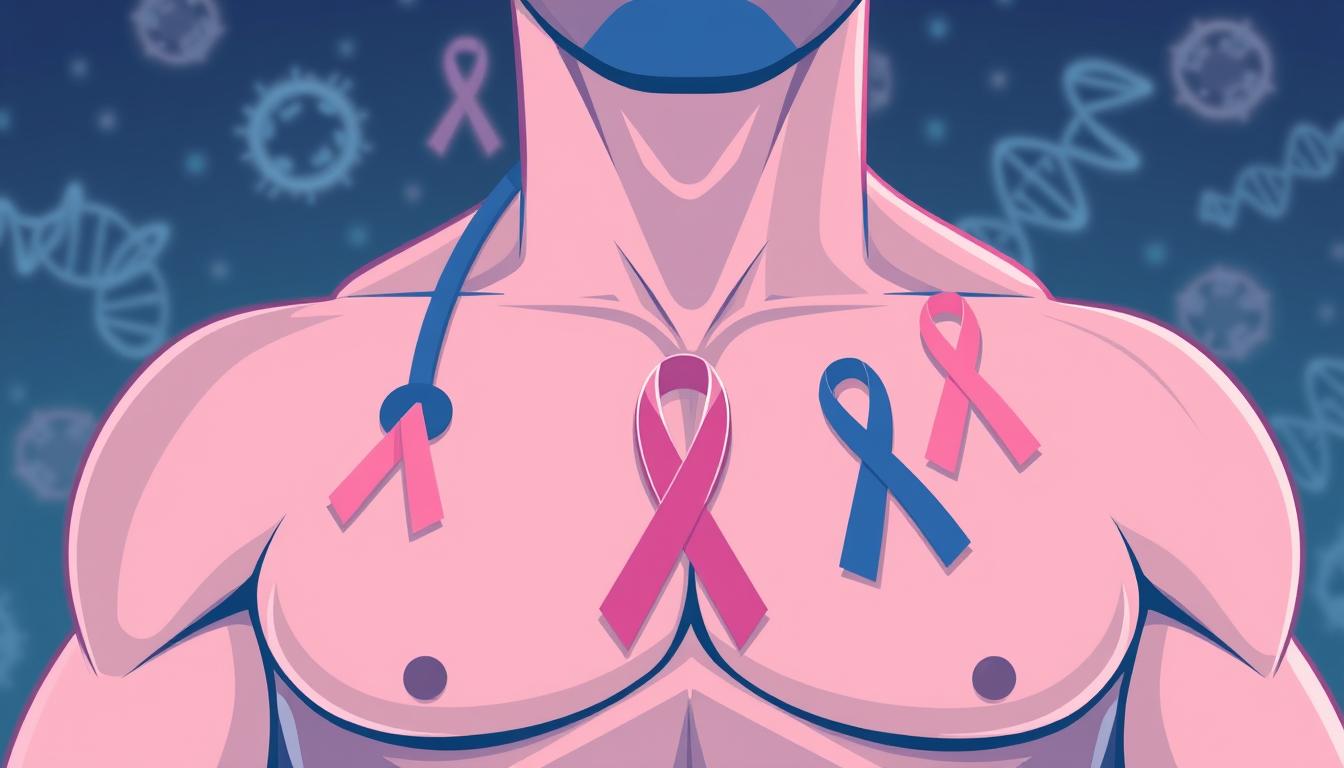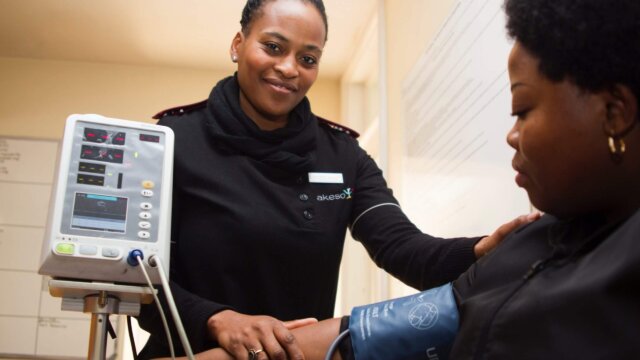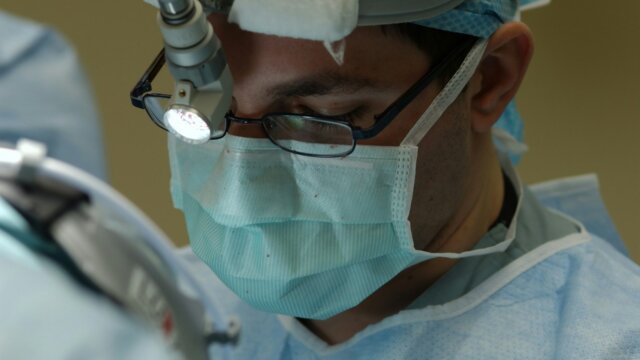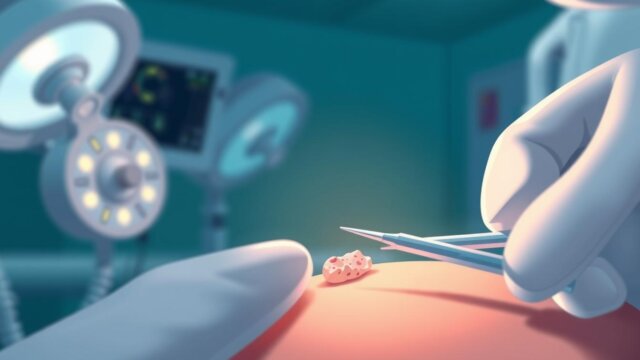FTC disclaimer: This post may contains affiliate links and we will be compensated if you click on a link and make a purchase.
Less than 1% of all breast cancers happen in men. Yet, male breast cancer cases have gone up worldwide over the last 30 years. In 2021, the U.S. saw 2,650 new cases of male breast cancer. This is compared to 281,550 cases in women. It’s important to understand this rare cancer, as it can greatly affect those who get it.
Male breast cancer starts in the breast tissue of men. It’s not just a women’s issue. Everyone has some breast tissue, so anyone can get breast cancer. Most often, it’s found in men aged 60 to 70. Symptoms include a painless lump or skin thickening, skin changes, nipple changes, and nipple discharge or bleeding.
Key Takeaways
- Male breast cancer is a rare condition, accounting for less than 1% of all breast cancer cases.
- The incidence of male breast cancer has been increasing worldwide over the past three decades.
- Obesity and genetic factors are associated with an increased risk of male breast cancer.
- Black men have higher incidence rates and worse survival outcomes compared to White men.
- Early detection and appropriate treatment are crucial for managing male breast cancer.
What is Male Breast Cancer?
Breast cancer in men is rare but serious. In the US, about 2,650 men are diagnosed each year. Men have a 1 in 833 chance of getting it. It makes up only 1% of all breast cancer cases.
It’s vital for men to know about male breast cancer. This includes its types and symptoms.
Types and Symptoms
Male breast cancer often starts in the milk ducts or glands. Less common types include Paget’s disease and inflammatory breast cancer. Symptoms include lumps, swelling, redness, and nipple changes.
Seeing a doctor quickly is key if you notice any changes.
Men are usually diagnosed between 60 and 70, with an average age of 68. However, it can happen at any age, so self-exams are important.
Male breast cancer is much rarer than in women. It’s about 100 times less common. However, the treatment outcomes are similar to those of women.

Early detection is crucial. Stage I can often be treated without chemotherapy. Treatment may include surgery, chemotherapy, and radiation.
“Men are encouraged to conduct monthly breast self-exams to check for any abnormalities.”
Knowing about male breast cancer helps men stay healthy. They should get medical help if they notice any changes. Early treatment can greatly improve outcomes.
Risk Factors for Male Breast Cancer
Genetic Factors
Male breast cancer is rare, making up less than 1% of all breast cancer cases in the United States. Some genetic factors can greatly increase a man’s risk. For example, BRCA1 and BRCA2 gene mutations, which are common in women, also raise the risk in men.
Up to 40% of male breast cancers may be linked to BRCA2 gene mutations. Another genetic condition, Klinefelter syndrome, can also increase the risk by 20 to 60%. This syndrome causes hormonal imbalances, which can lead to breast cancer in men. Knowing your genetic risk factors is key for early detection and prevention.
Other risk factors include family history, older age, and higher estrogen levels. Most men are diagnosed between 60 and 70 years old, with an average age of 67. Early detection and treatment can greatly improve outcomes for men with breast cancer.
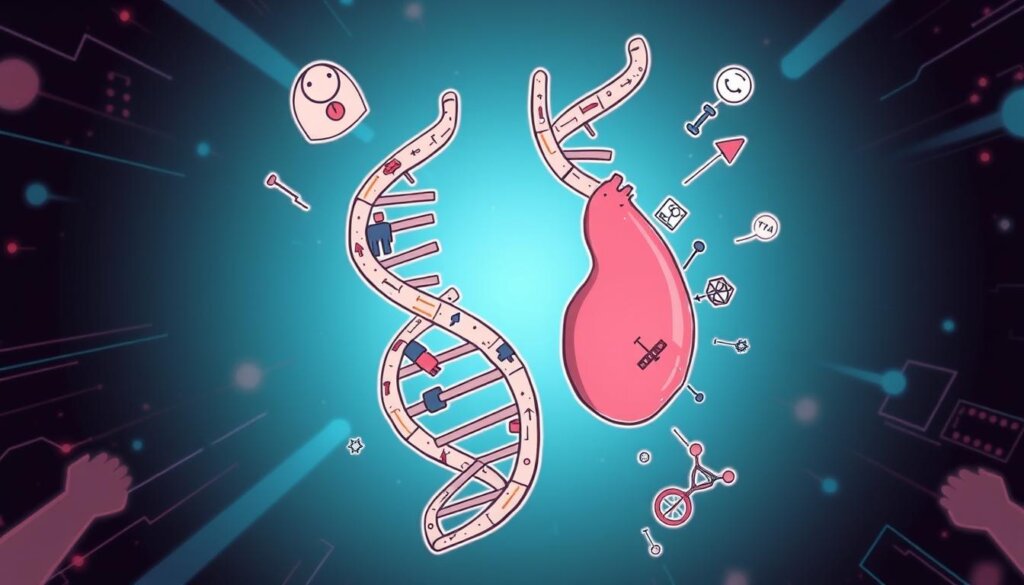
“Genetic mutations in genes like BRCA1 and BRCA2 can significantly raise a man’s breast cancer risk.”
Aging and Male Breast Cancer
As men age, their chance of getting breast cancer goes up. Most men are diagnosed in their 60s. The average age is about 72 years old.
Male breast cancer is rare, making up only 1% of cases. But, the risk grows with age. Hormonal changes, genetics, and some health issues can increase this risk.
Genetic changes like BRCA1 and BRCA2 mutations raise the risk, and they become more common with age. Conditions like Klinefelter syndrome, liver disease, and obesity can also increase the risk.
There’s no sure way to stop male breast cancer. But regular checks and knowing the risks can help find it early. Men can stay healthy by watching their health and discussing concerns with doctors.

“For most men, there’s no way to prevent male breast cancer. However, some individuals with an increased risk may have ways to lower that risk, such as genetic testing and regular breast cancer screening.”
Male Breast Cancer and Hormonal Factors
Hormones are key in male breast cancer. Conditions like Klinefelter syndrome and liver disease can upset hormone levels. This can raise the risk of breast cancer in men.
Men on hormone therapy for prostate cancer also face a higher risk. Keeping hormone levels healthy is vital to lower the risk of male breast cancer.
Hormonal Imbalances and Treatment
Some hormonal imbalances can lead to male breast cancer. Klinefelter syndrome, with an extra X chromosome, increases this risk.,
Liver cirrhosis in men may also up the risk of breast cancer.,
Hormone therapy for prostate cancer can raise breast cancer risk in men. It’s important to keep hormone levels balanced to lower the risk of male breast cancer.
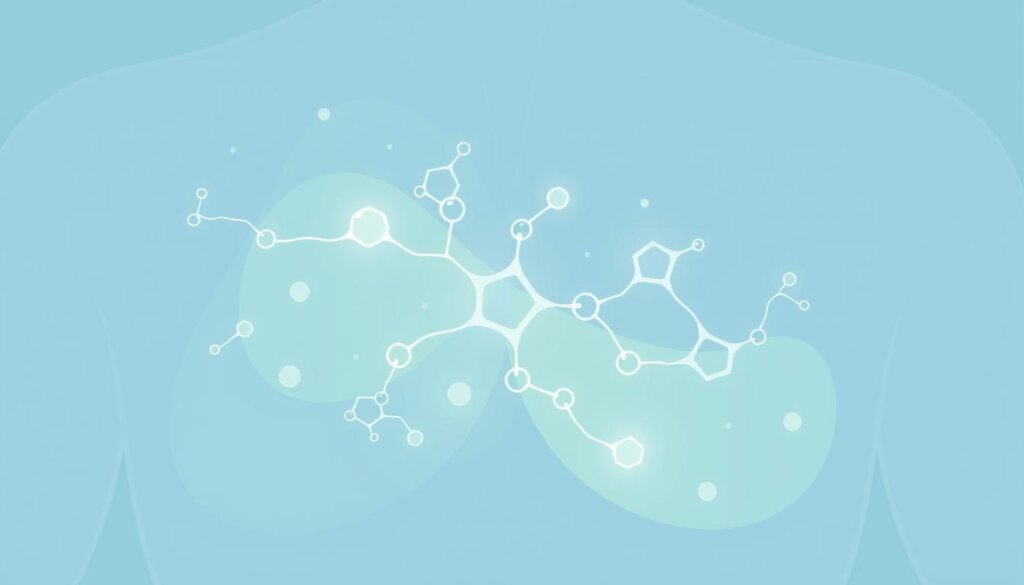
“Hormonal factors play a significant role in the development of breast cancer in men.”
Hormonal Factor | Impact on Male Breast Cancer Risk |
|---|---|
Klinefelter syndrome | Increased risk, |
Liver cirrhosis | Increased risk, |
Hormone therapy for prostate cancer | Increased risk |
Lifestyle Factors and Male Breast Cancer
Genetics and hormones are big players in male breast cancer. But lifestyle and health issues matter too. Obesity, especially in older men, can lead to higher estrogen levels and more breast cancer risk. Drinking a lot of alcohol also ups the risk.
Testicular problems like undescended testicles or surgery can increase breast cancer risk in men.
Jobs that expose men to gasoline, car fumes, and welding smoke raise their cancer risk. Diabetes can mess with male reproductive health, possibly affecting cancer risk. Genetic and hormonal factors also play a part in male breast cancer risk.
Changes in the androgen receptor gene can lead to male breast cancer, especially in Finnish men. Klinefelter syndrome, with an extra X chromosome, also raises cancer risk.
Gynecomastia, or benign male breast growth, can sometimes turn into cancer. Studies on biomarkers help us understand male breast cancer better.
Men should know about lifestyle and health factors that affect breast cancer risk. Regular health checks, talking to doctors, and a healthy lifestyle can lower this risk. It’s a serious issue, but awareness and action can help.
Male Breast Cancer: Understanding the Risks
Men can get breast cancer, though it’s much rarer than in women. If you have a family history of breast cancer, tell your doctor. Genetic testing can show if you have high-risk genes like BRCA1 or BRCA2. This means you might need more checks and ways to prevent it.
Even without a family history, some men face higher risks. This includes those with Klinefelter syndrome or past radiation. Regular screening can spot problems early. About 1% of men get breast cancer, with most being invasive ductal carcinoma.
Statistic | Value |
|---|---|
Estimated male breast cancer diagnoses in 2023 (US) | 2,800 |
Estimated male breast cancer deaths in 2023 (US) | 530 |
Estimated female breast cancer diagnoses in 2023 (US) | 297,790 |
Estimated female breast cancer deaths in 2023 (US) | 43,170 |
Lifetime risk of breast cancer in men | 1 in 726 |
Early detection and quick treatment are key for better outcomes. Knowing your familial risk of male breast cancer and getting genetic testing for male breast cancer risk helps. Regular breast cancer screening for high-risk men is also important. This way, you can lower your risk and catch the disease early.
“Little research has been conducted on male breast cancer treatment due to its rarity and lack of surveillance.”
Diagnosis and Treatment of Male Breast Cancer
Screening and Diagnosis
Diagnosing male breast cancer starts with a physical check. A healthcare provider looks for lumps or changes in the skin or nipple. Tests like mammograms or ultrasounds might follow to learn more.
A biopsy is often next. It removes a small tissue sample for analysis.
Men should see a doctor quickly if they notice breast changes. Early diagnosis and treatment are key for good results. Male breast cancer is rare but often found later because of delayed care.
Screening and Diagnosis | Details |
|---|---|
Physical Examination | Checking for lumps, changes in skin or nipple |
Imaging Tests | Mammograms, ultrasounds |
Biopsy | Removing a small tissue sample for analysis |
Men with a family history of breast cancer or certain genetic mutations are at higher risk. They might need more frequent checks to catch changes early.
Quick diagnosis and the right treatment are vital for good outcomes in male breast cancer. Thanks to medical research, survival rates are getting better. New treatments are being found to help men get the best care.
Managing Male Breast Cancer
Treatment for male breast cancer often mixes different therapies. Surgery, like a mastectomy, is usually the first step. Then, treatments like chemotherapy, radiation, hormone therapy, or targeted therapy might follow.
For advanced cancer, systemic therapy is key. This includes hormone therapy, chemotherapy, targeted therapies, or immunotherapy. The plan depends on the cancer’s type and how it responds to treatments.
Even though male breast cancer is rare, treatment has gotten better. Early detection and good care are very important. Men with breast cancer should get regular check-ups to catch any new cancers early.
Stage | Characteristics |
|---|---|
Stage 0 | Non-invasive cancer limited to the milk duct |
Stage I | Relatively small tumors, with little or minor lymph node involvement |
Stage II | Larger tumors, with some lymph node spread |
Stage III | Advanced tumors, often with significant lymph node involvement |
Stage IV | Cancer has metastasized to other parts of the body |
Male breast cancer is rare, but treatment has improved a lot. Knowing about surgery, chemotherapy, radiation, and hormone therapy, helps men with breast cancer. They can work with their doctors to find the best treatment plan.
Conclusion
Male breast cancer is rare but serious. It needs quick action. Men face unique risks and considerations compared to women.
Aging, genes, hormones, radiation, and lifestyle can raise a man’s risk. Early detection is key. Regular self-exams and screenings are vital. Working with healthcare providers is also important.
Men can protect their health by knowing about male breast cancer. Regular screening can help find and treat the disease early.
It is crucial to combine efforts from healthcare providers, policymakers, and the public. We must raise awareness and ensure access to care. Together, we can help men fight this disease and stay healthy.
FAQ
What is male breast cancer?
Male breast cancer is a rare cancer in men. It starts as a growth in the breast tissue. It’s not just a women’s disease, as everyone has some breast tissue.
What are the common symptoms of male breast cancer?
Symptoms include a lump or swelling in the breast. You might also see redness or flaky skin. Other signs are irritation, dimpling, nipple discharge, and pain in the nipple area.
What are the risk factors for male breast cancer?
Older age and genetic mutations like BRCA1 and BRCA2 increase risk. Family history, Klinefelter syndrome, and radiation exposure also play a part. Liver disease, obesity, and testicular conditions are other factors.
How does age affect the risk of male breast cancer?
Age raises the risk of breast cancer in men, just like in women. Most cases are found in men in their 60s. The average age of diagnosis is about 72 years old.
How do hormonal factors influence male breast cancer risk?
Hormones are key in male breast cancer. Conditions like Klinefelter syndrome and liver disease can change hormone levels. This can increase the risk. Hormone therapy for prostate cancer also raises the risk.
What lifestyle and medical factors can impact male breast cancer risk?
Being obese and drinking a lot of alcohol can increase risk. So can testicular conditions like undescended testicles and adult mumps.
How can men at high risk of breast cancer be screened and monitored?
Men with a family history or known genetic mutations should talk to their doctor. Genetic testing can show if they have high-risk mutations. This allows for closer monitoring and prevention strategies.
How is male breast cancer diagnosed and treated?
Diagnosis starts with a physical exam and tests like mammograms and biopsies. Treatment often includes surgery, chemotherapy, and radiation. Hormone therapy and targeted therapy may also be used based on the cancer’s stage and type.
